The verdict: With the exception of a frustrating touchpad control system, the redesigned 2018 LS sedan is a quantum leap into the 21st century for the model that launched Lexus.
Versus the competition: With modern technology and interior design innovations, the new 2018 LS 500 is far more competitive and the LS 500h is finally a respectable hybrid.
A decade since its last full redesign, the Lexus LS sedan is all-new, going on sale in February 2018 for roughly $75,000. The long-wheelbase version has been discontinued, but the LS 500h hybrid returns, now offering rear- as well as all-wheel drive, just like the regular LS 500. This review covers both vehicles.
I drove three versions: an LS 500 with optional AWD, an F Sport version with standard RWD, and an LS 500h hybrid with RWD at a Lexus event in and around San Francisco. (Per our ethics policy, Cars.com pays for its airfare and lodging for such events.)
Barrier to Entry
There's something you'll have to get past if you're going to buy a Lexus LS, and it's not the giant grille. Actually, you'll have to get past that, too, but I think it's a relatively low hurdle. A taller hurdle is the Remote Touch interface system, which comprises an impressively large, 12.3-inch mid-dashboard display and a touchpad controller on the center console. Historically, we've called this a multimedia system, but that term underrepresents its importance. It's a foundational interface through which the driver controls many of the car's features, and there are a lot of those in this car.
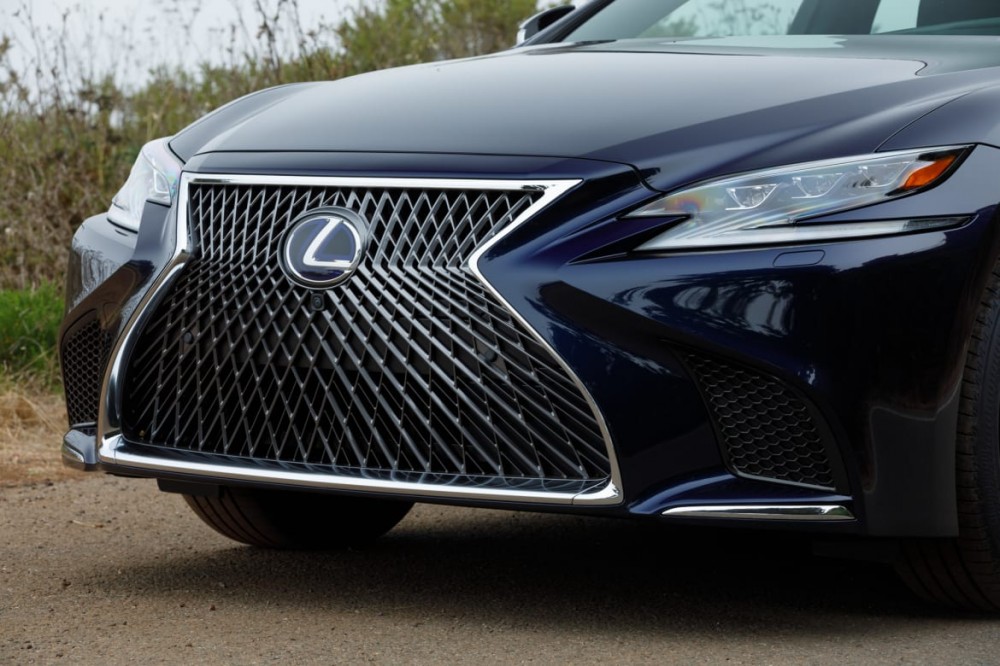
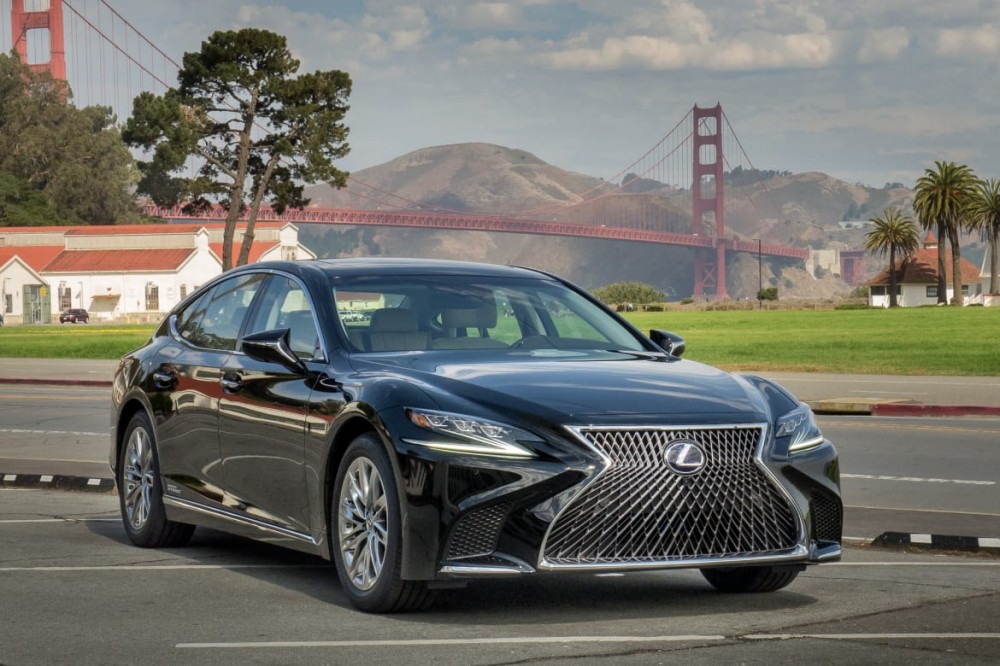
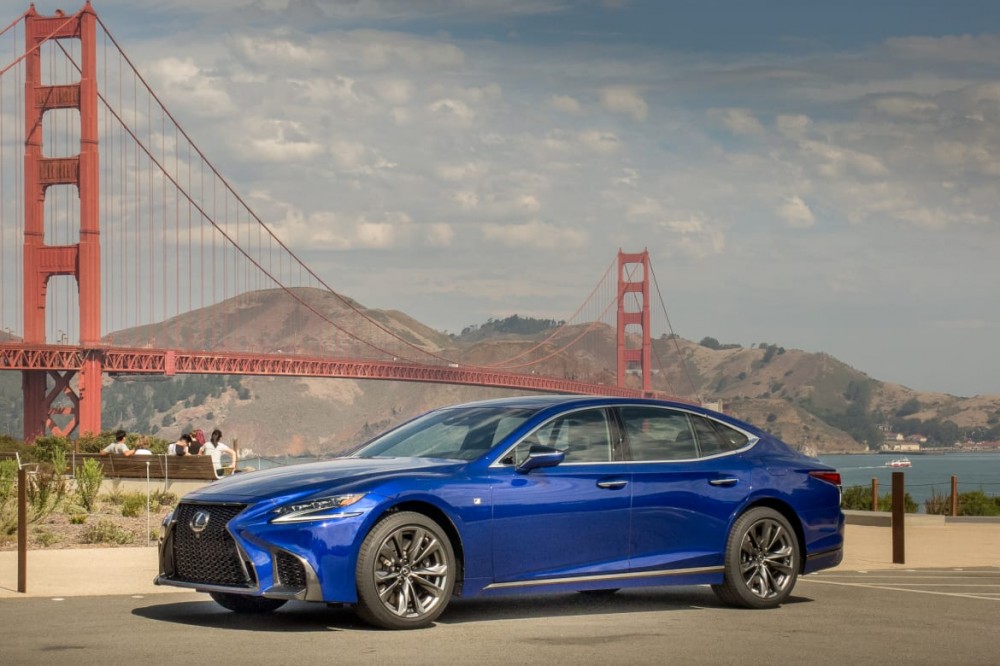
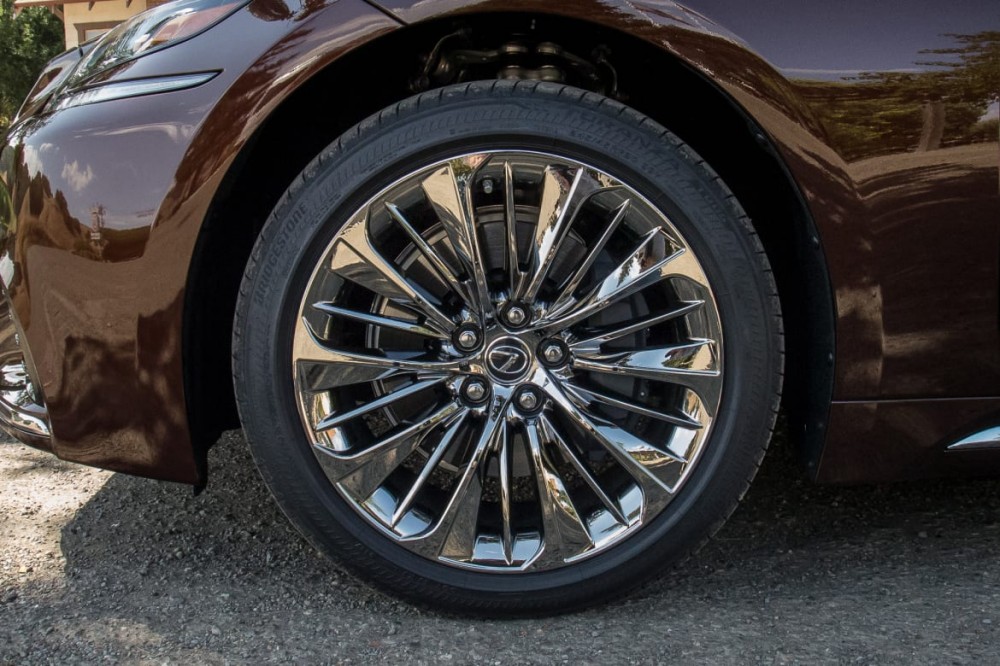
Prospective buyers have to accept the controls in any car, but I single this one out because it's been one of the least popular among our editors and consumers. In lieu of a touchscreen (our preferred interface), some automakers separate the display from the means of controlling the onscreen menus — usually a rotary knob on the center console that also has a joystick motion and press-to-enter function. This isn't a great way to get a cursor around a screen, but unfortunately, Lexus' solutions to that problem — mouses and touchpads — have been controversial at best. We find the touchpads especially difficult to use when the car is in motion, but at least the generation in the new LS seems a little better than that in the RC coupe and NX SUV. It also helps that these cars are more docile and smoother-riding, so disruptions are fewer — but on the flip side, this car's menus are more numerous and complex, so you'll need to use Remote Touch more frequently. One step forward, one back.
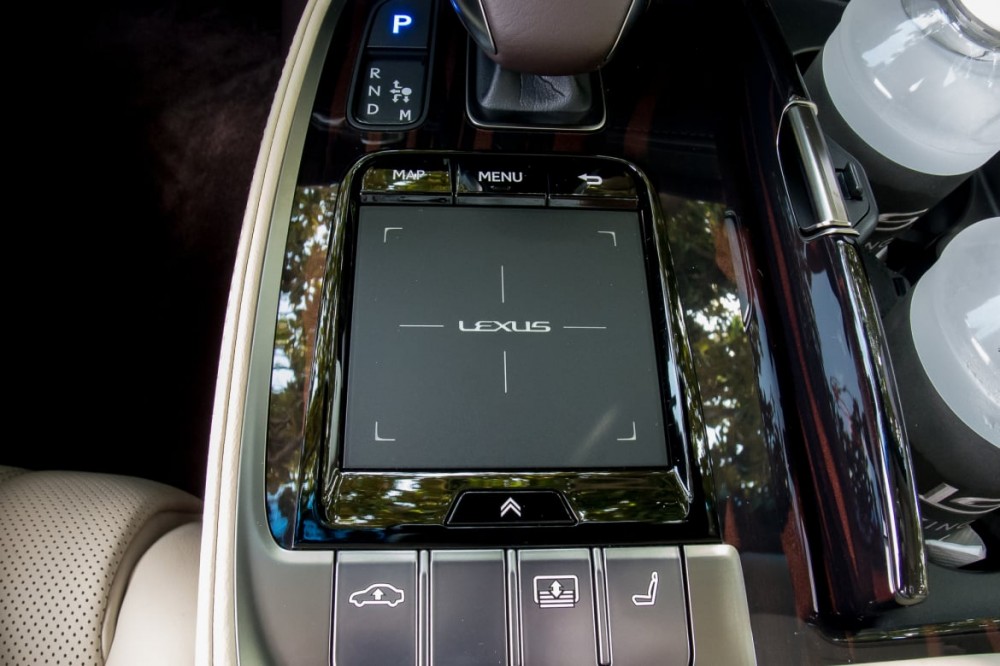
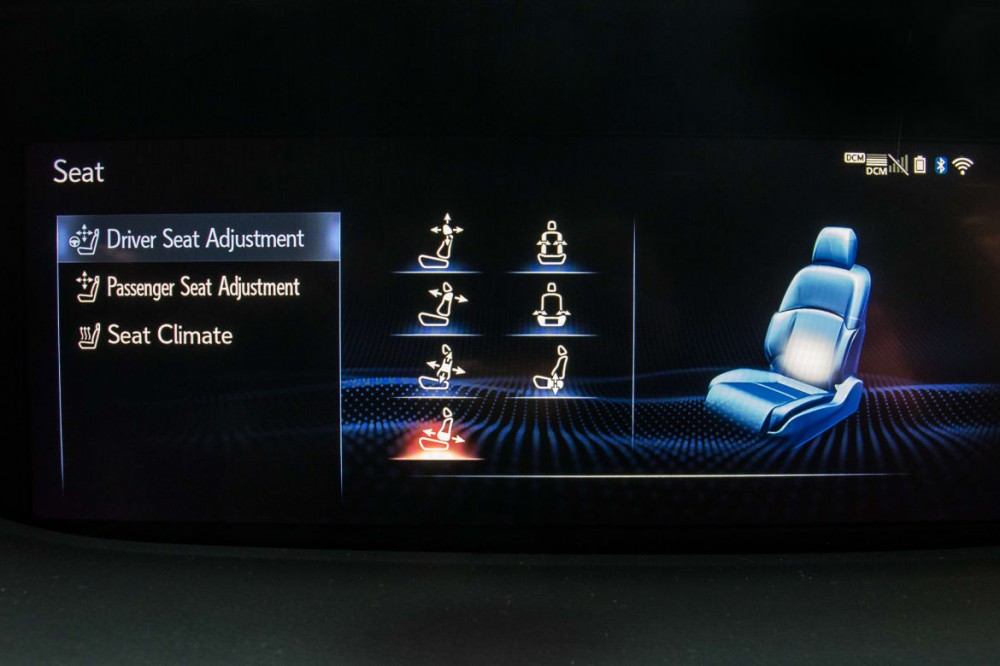
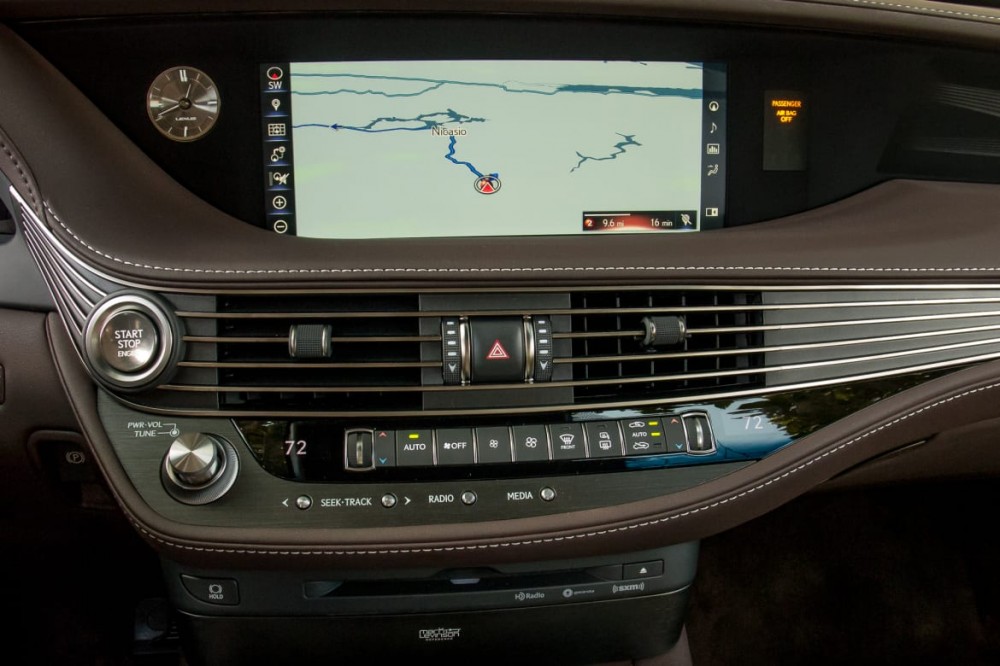
How It Drives
Driving the LS shows how thoroughly reengineered it is in all its versions. The 2018 replaces the LS 460's 4.6-liter V-8 engine with a twin-turbocharged 3.5-liter V-6. The switch boosts rather than hurts performance: The new LS 500 packs 416 horsepower versus the old V-8's 386 hp. Torque is 442 pounds-feet at 1,600-4,800 rpm versus 367 pounds-feet at 4,100 rpm with the V-8. The 2018 also has two additional gears — a 10-speed automatic transmission — to get the most out of the engine. Lexus estimates a zero-to-60-mph time of 4.6 seconds with rear-wheel drive. That's a full second quicker than the 2017 LS 460.
Despite the specifications and the additional gears, the LS 500 doesn't have quite the off-the-line immediacy one might expect. Still, it's plenty quick once it gets going, and the drivetrain behaves very nicely. As automatic transmissions have added gears, they've too often been stricken with indecision and hesitation, but the Lexus 10-speed is admirably responsive whether you jab the accelerator pedal or operate the steering wheel's shift paddles.
Driving modes — selectable via a dashboard knob positioned at roughly 2 o'clock behind the steering wheel — include Eco, Normal, Comfort, Custom, Sport S and Sport S Plus. Accelerator pedal and downshifting sensitivity increase progressively with almost every step (Normal and Custom are the same in terms of acceleration, but the modes change other vehicle characteristics, as well). Engine sound also increases in the two sport modes, augmented through the audio system — another near-universal technique in the age of turbocharged engines. (BMW was the first.)
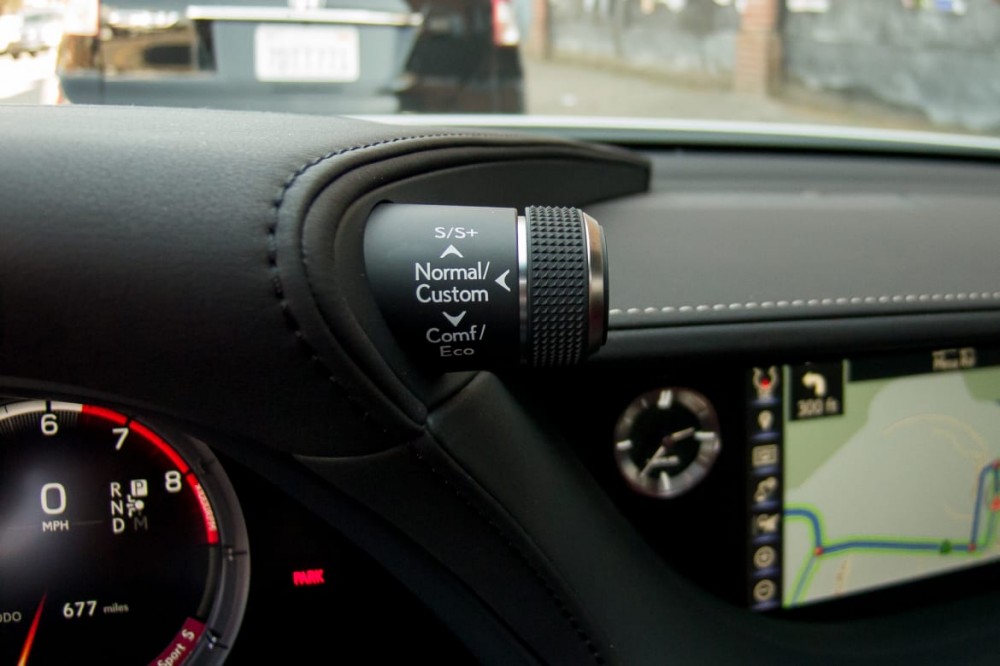
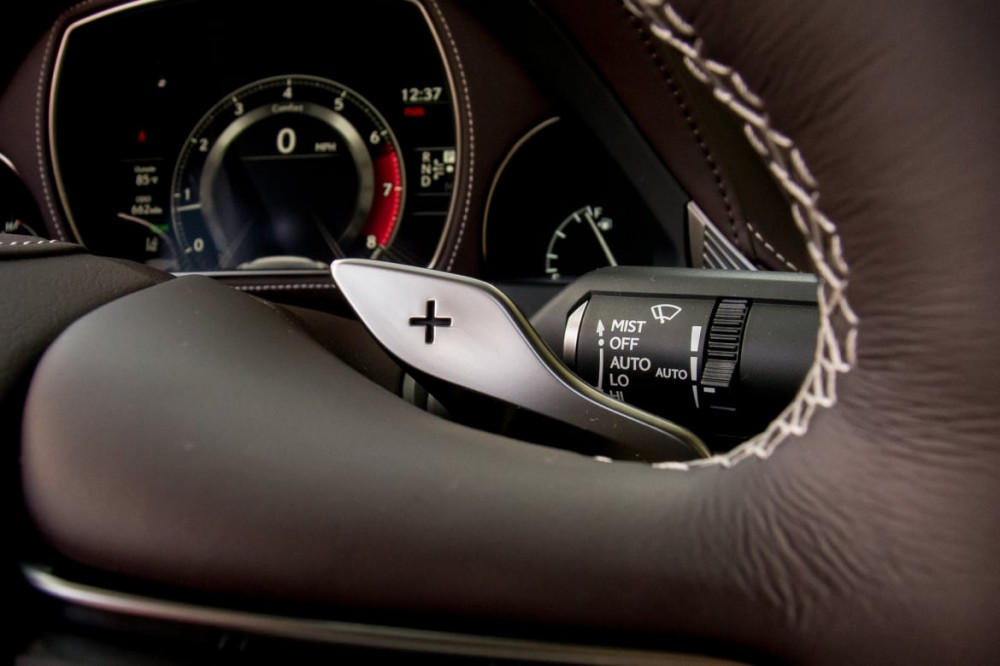
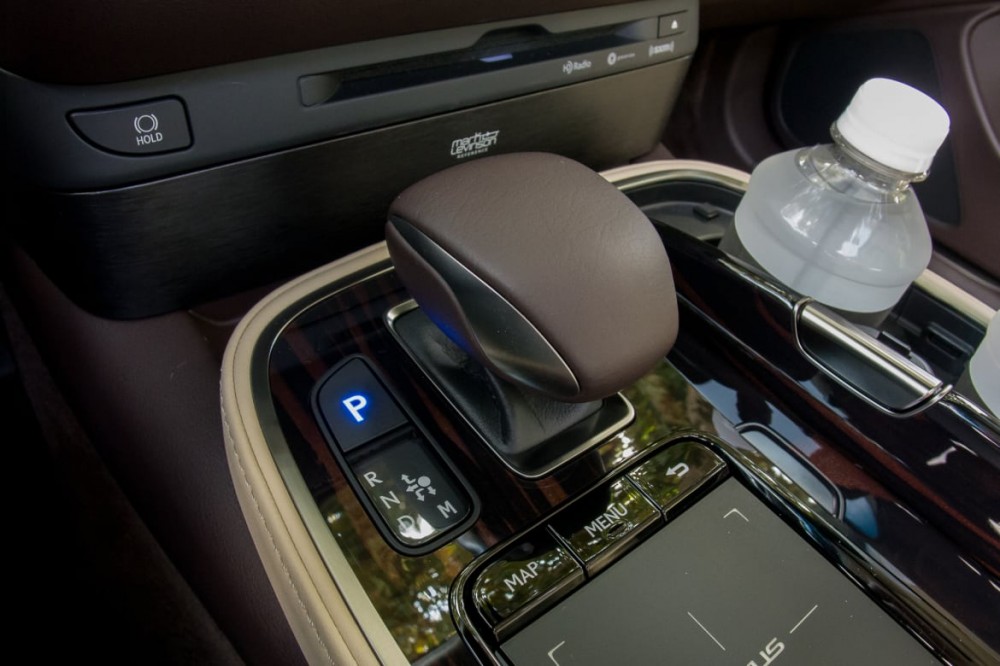
It's unclear at this early stage which suspension features will be standard and which will be optional on the various trim levels, but all the cars I drove included Lexus' air suspension (in lieu of coil springs) and variable-firmness shock absorbers, called Adaptive Variable Suspension. With these features, the LS is both comfortable and capable — a mix that isn't ensured merely because the technology is present. To the contrary, Lexus is one of many non-European brands that spent years pursuing so-called European handling and ended up with cars that were neither as lavishly comfortable as the original LS nor as sporty as their benchmarks.
With these suspensions, the 2018 finally has it dialed in nicely, leaning toward the comfort you want in a large luxury sedan but with the option of enhanced sportiness for street driving. The front-to-rear weight distribution seems more balanced, and the steering has a very good feel on-center, recalling the LC 500. Body motions are well-controlled even without the optional active stabilizer bars, with which my F Sport was equipped. (The F Sport cornered remarkably flat, but I would have preferred if a tad more body roll were programmed in to make it feel more real and less like I was driving in a video game.)
The 2018 finally has it dialed in nicely, leaning toward the comfort you want in a large luxury sedan but with the option of enhanced sportiness.
F Sport
Even in the softer modes, like Comfort, the F Sport's suspension is a bit firmer, but comfort remains the order of the day. Again recalling the LC 500, activating the Sport S and Sport S Plus settings on less-than-perfect pavement is more likely to introduce mild vibration than jarring bumps. Though the adaptive shock absorbers aren't magnetic (arguably the best type), the new model year brings continuously variable firmness where the previous generations had just a few fixed levels.
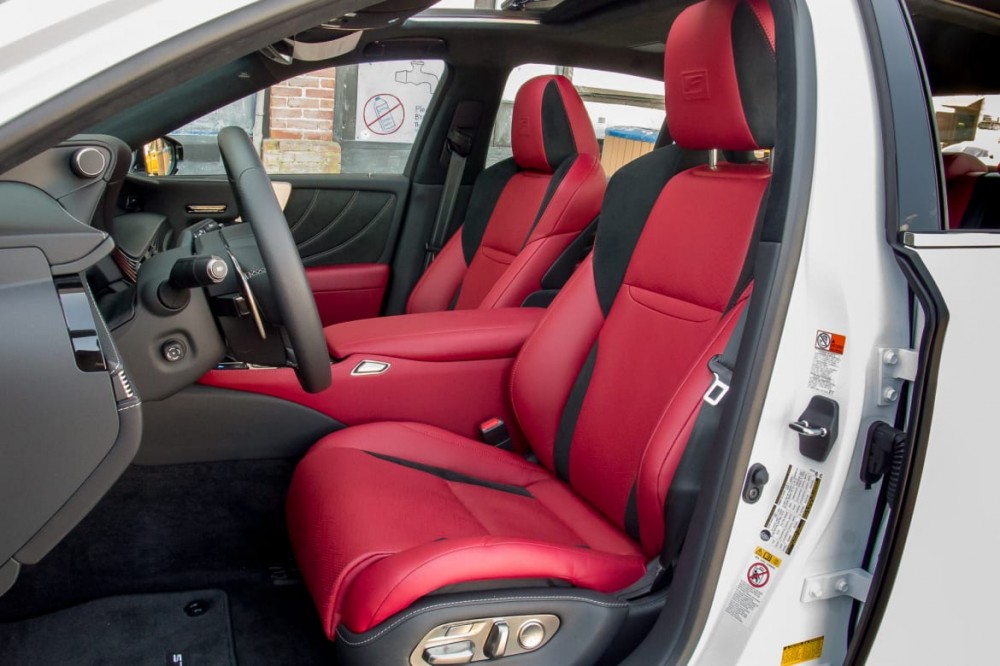
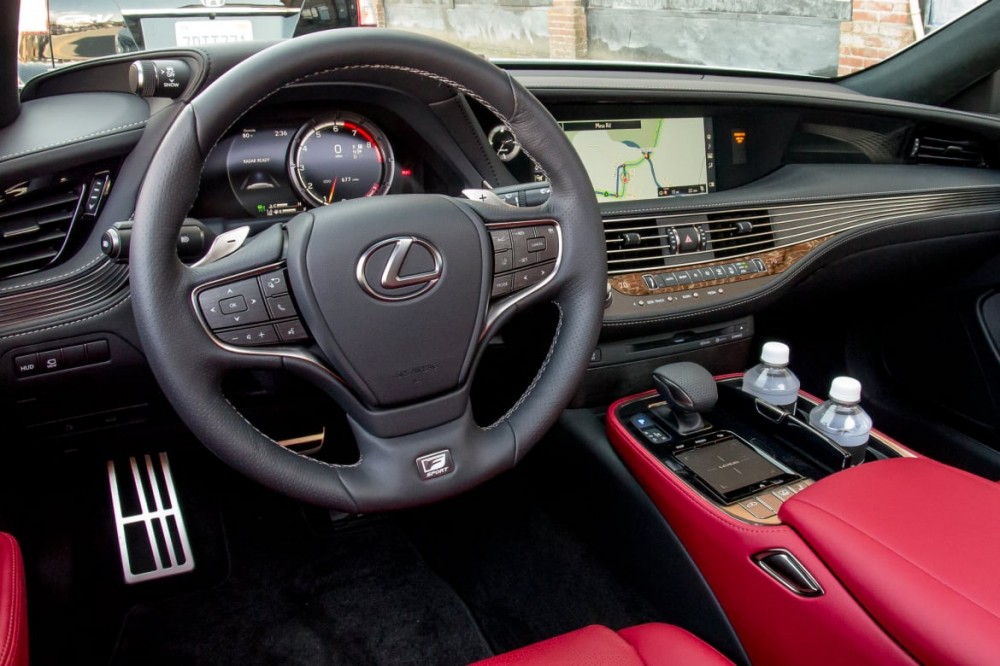
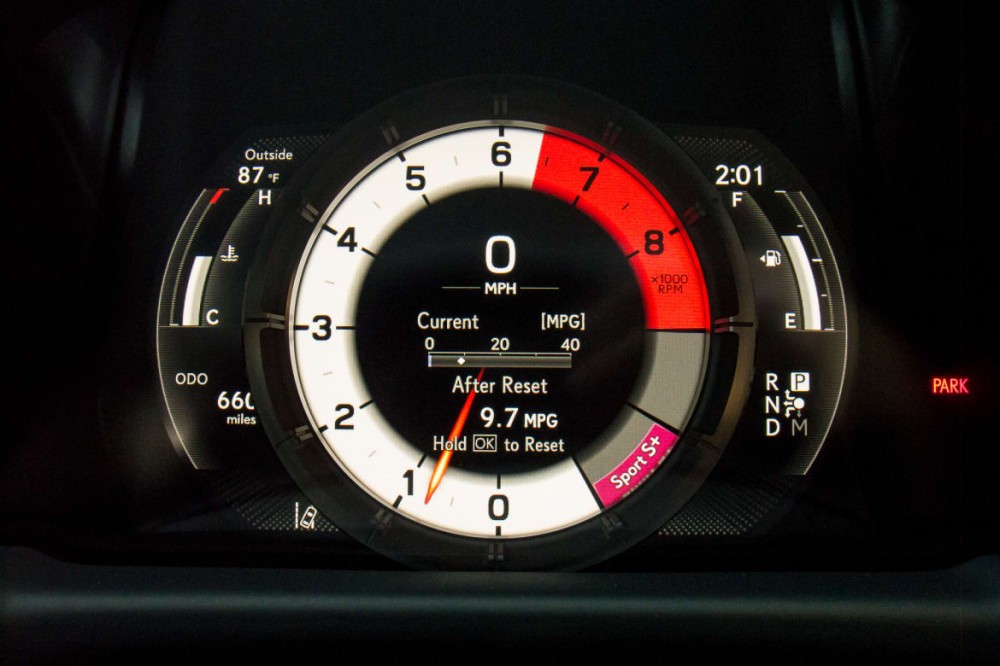
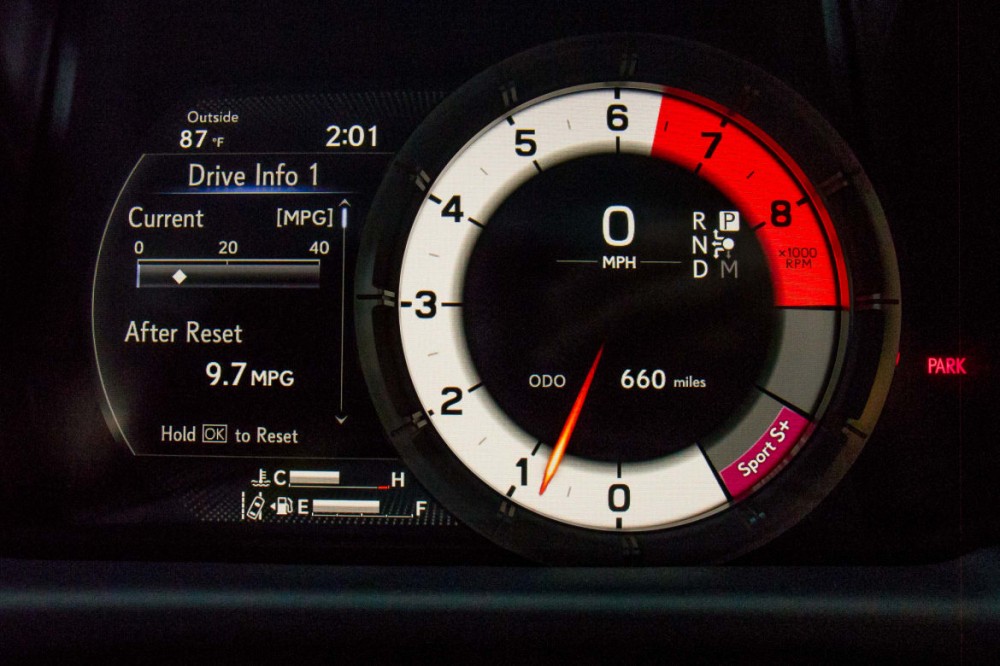
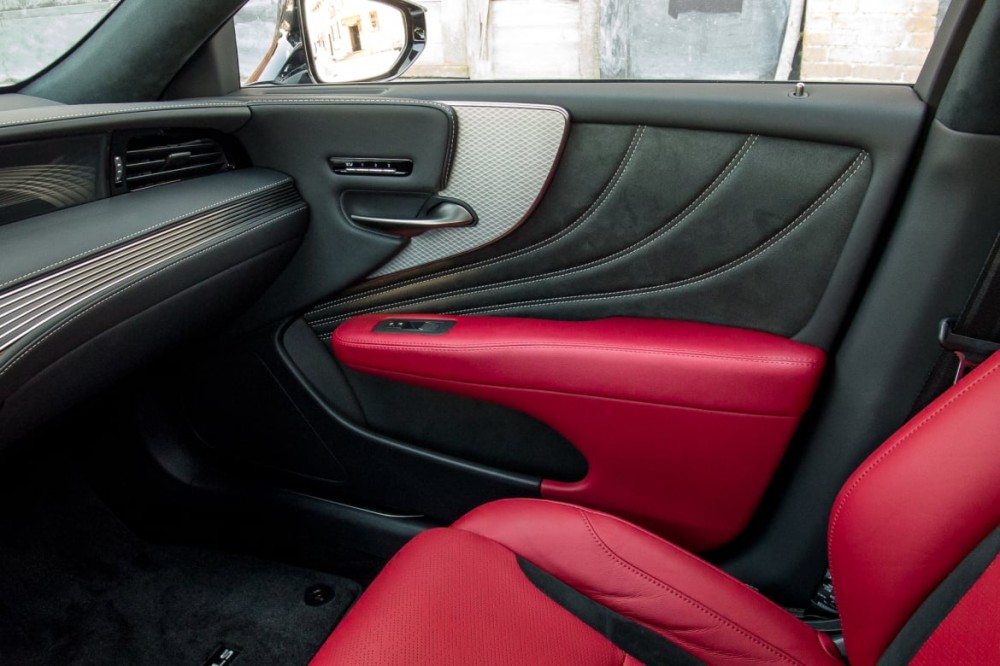
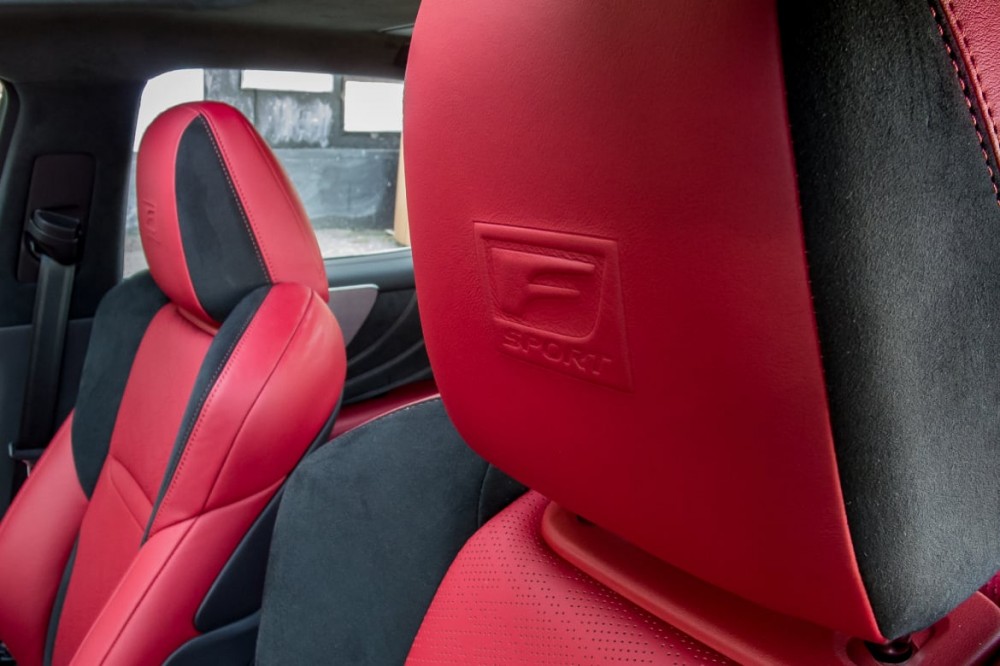
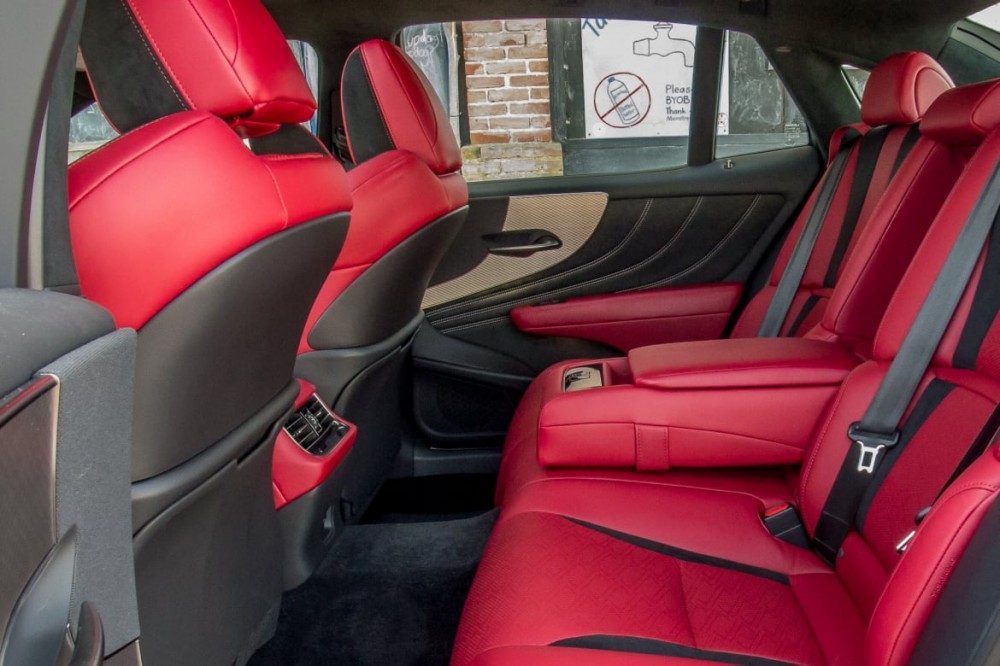
While the F Sport treatment is mostly cosmetic, in addition to the suspension differences this package replaces the standard four-piston front brake calipers and 14-inch rotors with six-piston calipers and 15.7-inch discs. The rear brakes go from two to four pistons and gain an inch of disc diameter, up to 14 inches.
The brakes were the most dramatic difference between the regular and F Sport versions of the LS 500. I had no problem with the standard setup, but I found the F Sport's braking to be stronger and more confidence-inspiring for spirited driving, with superior pedal feel.
A Real Hybrid
The most improved award goes to the LS hybrid, now dubbed the LS 500h, which for the first time provides what you might want from a hybrid — high gas mileage. (Duh!) The LS 600h L, last sold as a 2016, increased mileage by a whopping 1 and 2 mpg (combined) versus the rear- and all-wheel-drive non-hybrids, respectively, and it started at $121,415 versus $83,280 for an LS 460 L AWD. No amount of PR spin was able to head off our mockery of this vehicle.
The EPA hadn't published estimates for the LS 500h as of publication, but Lexus estimates mileage of 25/33/28 mpg city/highway/combined with RWD and 23/31/26 mpg with AWD. That's an enormous improvement over the 600h's estimated 19/23/20 mpg (AWD only). It's also a healthy increase over the non-hybrid LS 500's mileage, which Lexus estimates at 19/29/23 mpg (RWD) and 18/27/21 mpg (AWD). These are respectable gains over the 2017 model's combined ratings of 19 and 18 mpg for rear- and all-wheel drive, respectively. All the LS sedans require 91-octane premium gasoline.
If Lexus' estimates are accurate, the LS 500 trails the less powerful 2018 BMW 740i by 1 to 2 mpg combined, depending on driveline, but beats the more powerful 750i by 2 to 3 mpg combined. As for hybrid competition, the BMW 740e — an all-wheel-drive plug-in hybrid — beats the LS 500h AWD by 1 mpg but trails the RWD version by 1 mpg. The BMW also goes an estimated 14 miles on electric power, but I wasn't impressed when I reviewed it.
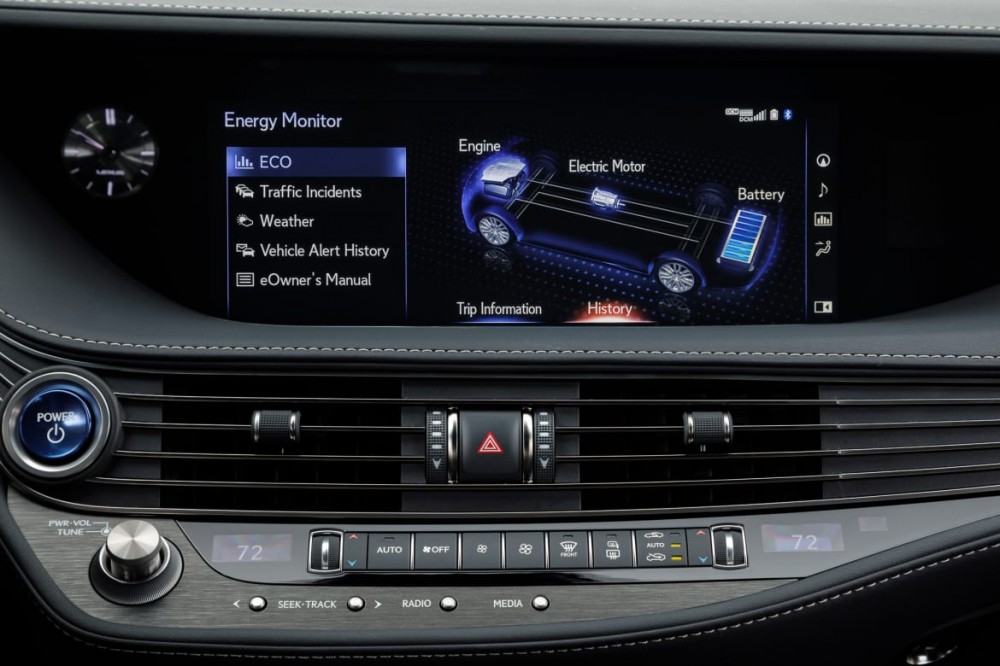
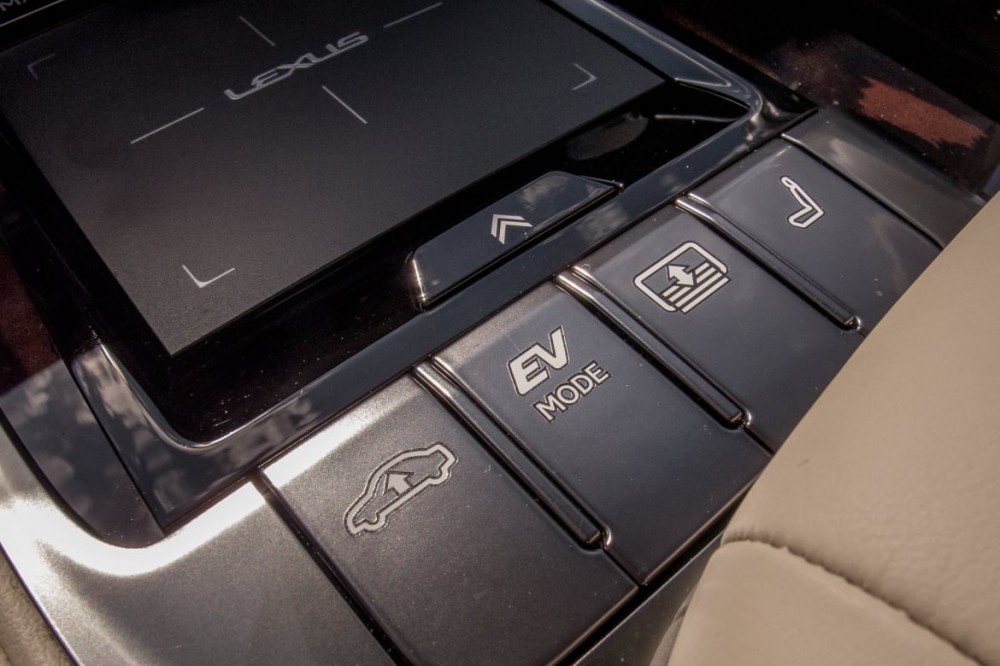
How does it drive? Quite well. It feels like the electric motor gives the 500h a little more oomph off the line, even though the hybrid system's total power is 354 hp — less than the non-hybrid. Lexus estimates zero-to-60-mph times of 5.1 seconds (RWD) and 5.2 seconds (AWD).
There's no question it's a hybrid, as you'll notice the non-turbocharged version of the 3.5-liter V-6 engine starting and stopping, and acceleration isn't perfectly linear, though it feels more natural than, say, a Prius. The usual Toyota hybrid drivetrain — two motor/generators and a gas engine connected through a "power-split" gearset — has continuously variable properties that are efficient but may delay response or lead to engine drone at unexpected times.
In the 500h, those same components combine with what's essentially a built-in four-speed transmission, and the system is programmed to add artificial rev-and-shift action, so the whole shebang feels like a 10-speed automatic. (Not exactly like one, but enough to quell complaints.) On some level, this extra hardware and stair-stepping diminishes efficiency a little, but it compensates by increasing driver acceptance a lot.
In the end, if you're picky about acceleration and braking — which feels good but undeniably hybrid in the LS 500h — you'll probably prefer the LS 500, but the 500h improves on drivability versus earlier hybrids.
21st-Century Interior Design
I find the cabin much improved, thanks especially to Lexus' efforts to bring in new materials and textures. The technology will always be there, but if you want relatively conservative environs, you can get traditional glossy wood trim and the like.
Where the new LS really stands out is with optional ornamentation, such as gemlike Kiriko cut-glass door appliques whose facets complement aspects of the interior design, including the backlit, translucent panel in front of the passenger. The laser-etched wood does the same thing. Other patterned wood trim options, like Herringbone and Organic Art, recall the design innovation for which Audi is revered. I can't emphasize enough that you must see these daring additions in person, because photos (including mine) all make them look louder and more conspicuous than they are in real life — none more so than the origami-inspired pleated-cloth door panels. It's truly neat stuff to check out in person, and it's exclusive to Lexus.
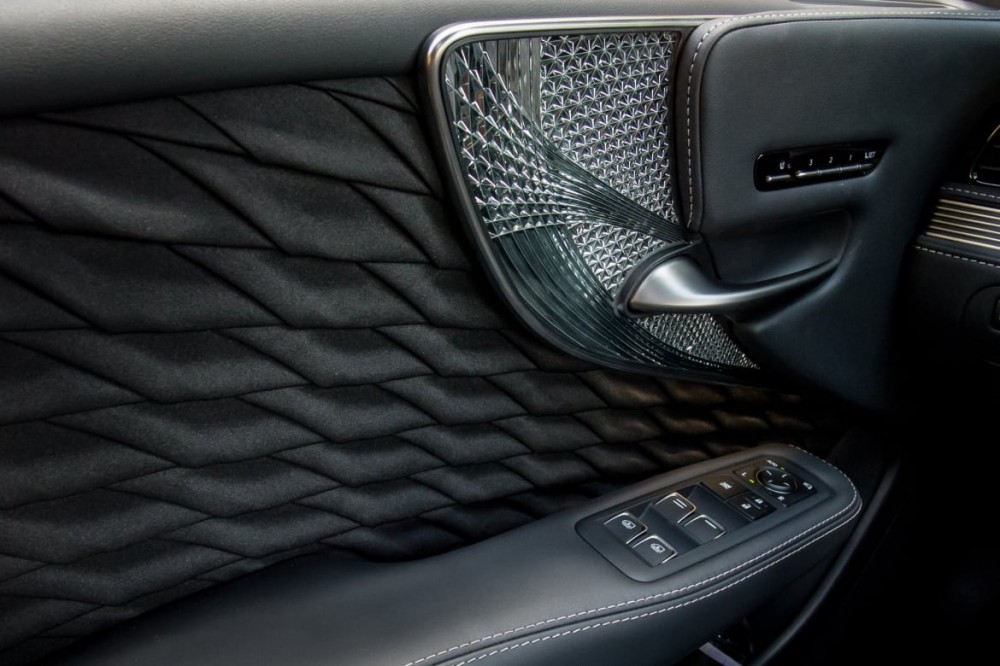
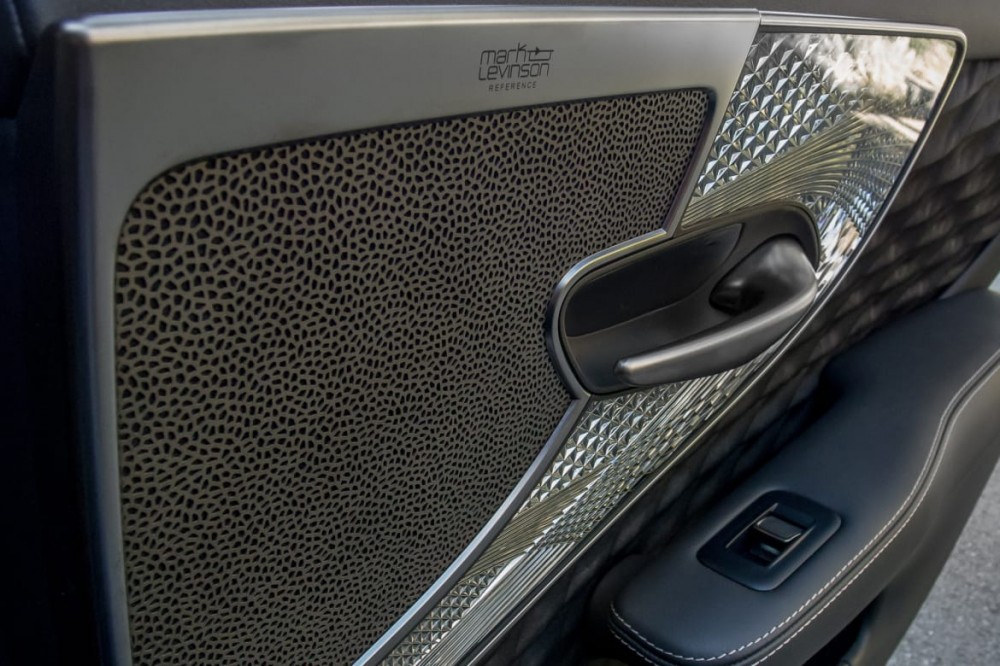
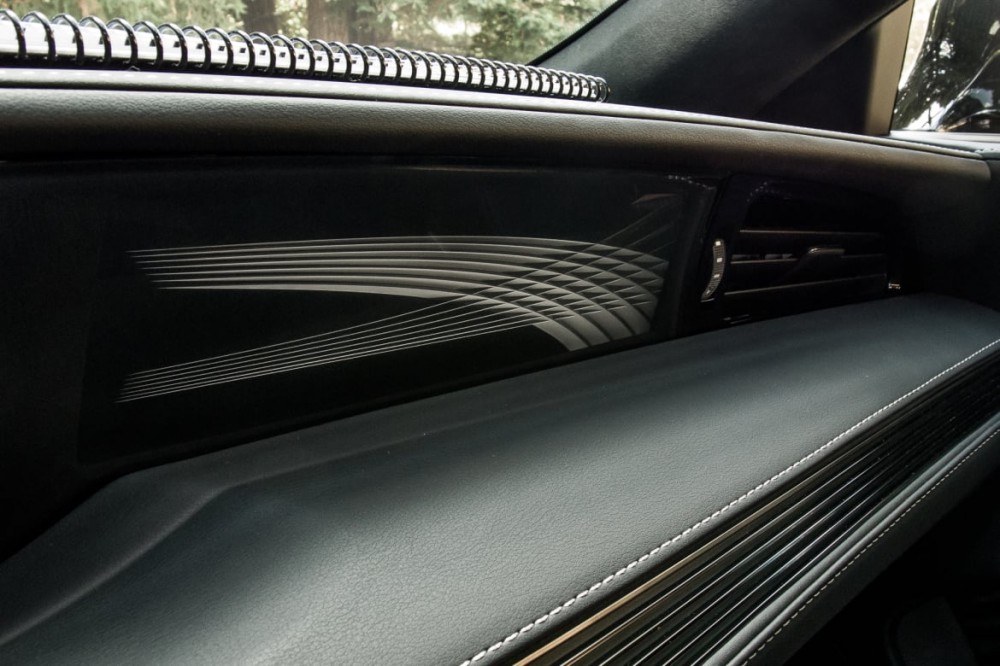
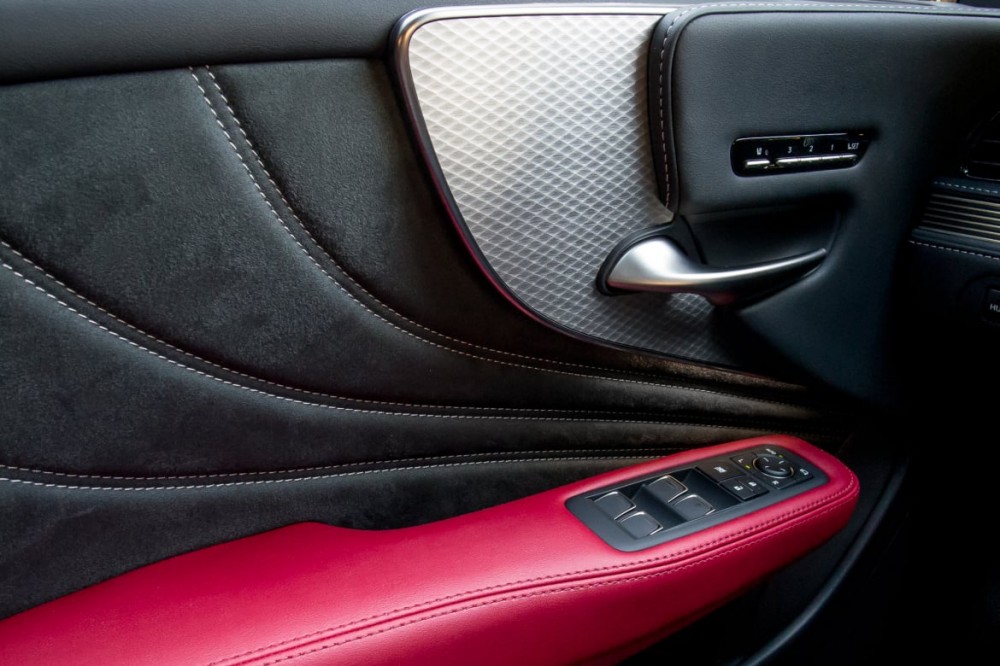
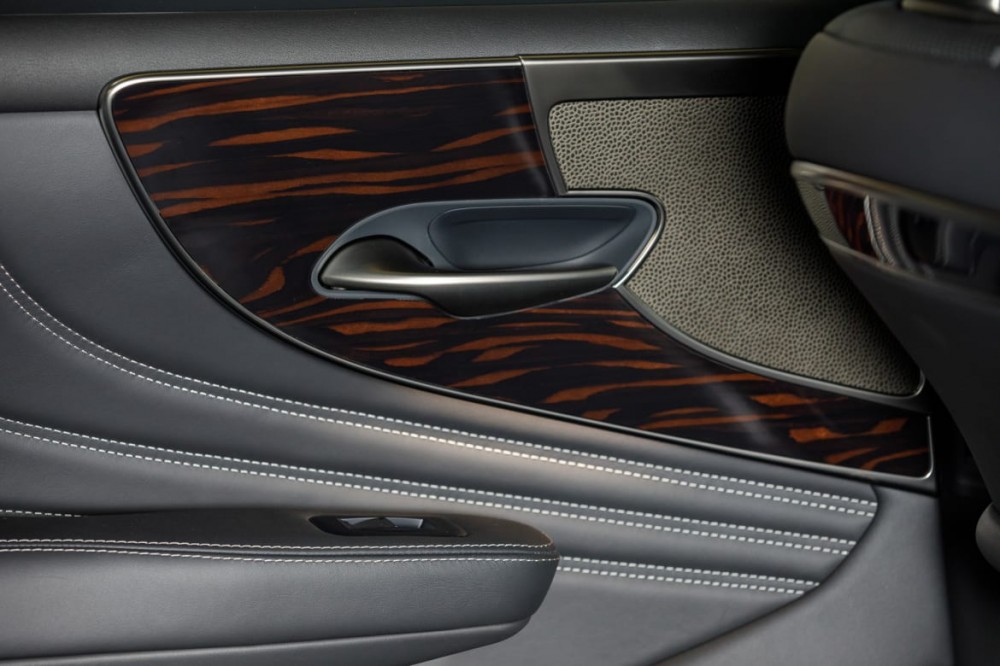
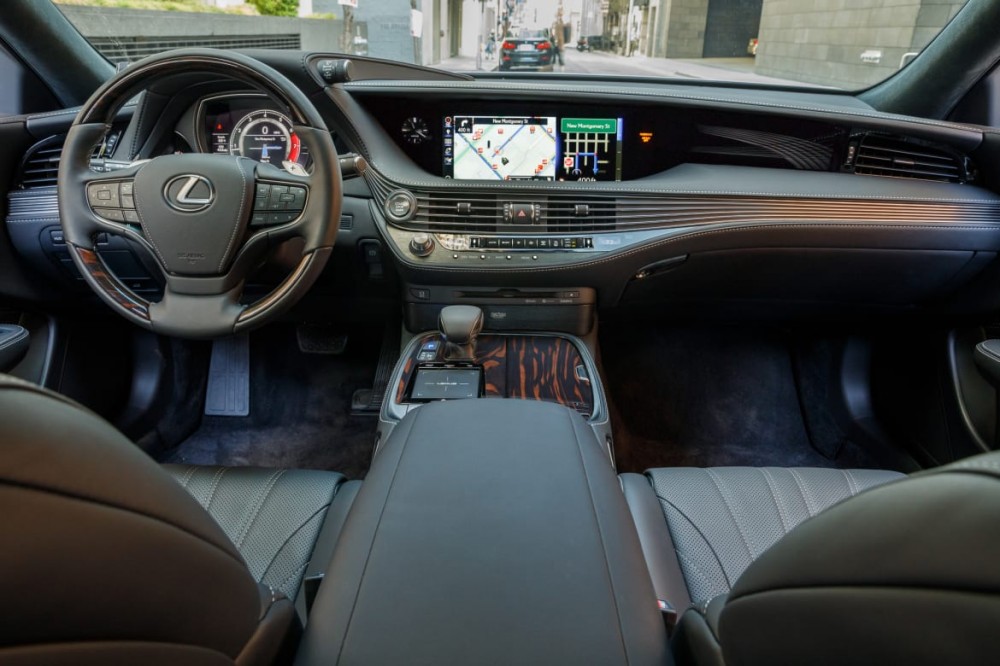
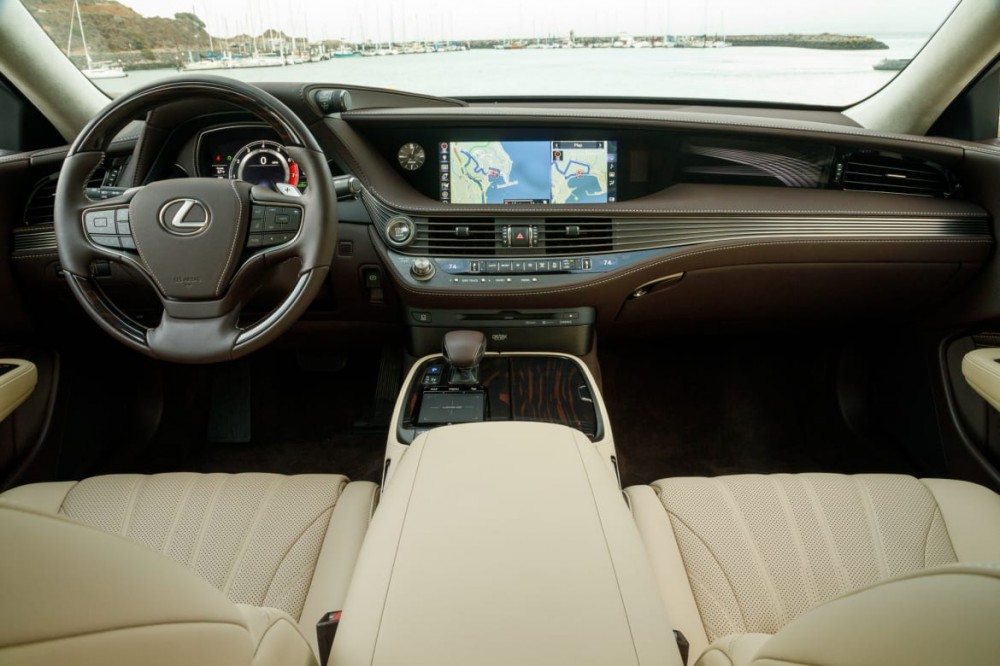
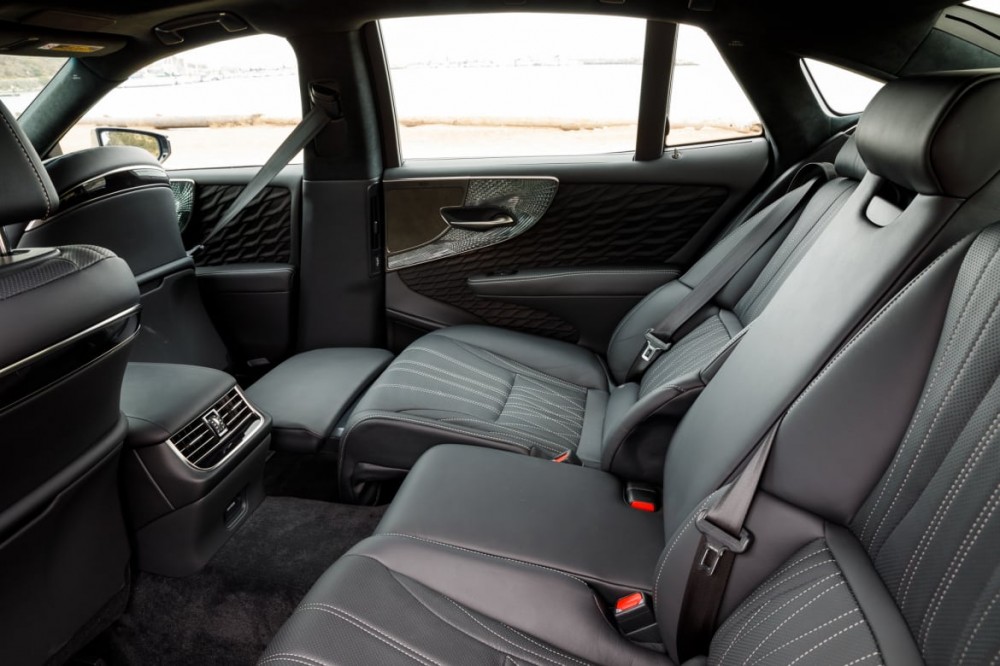
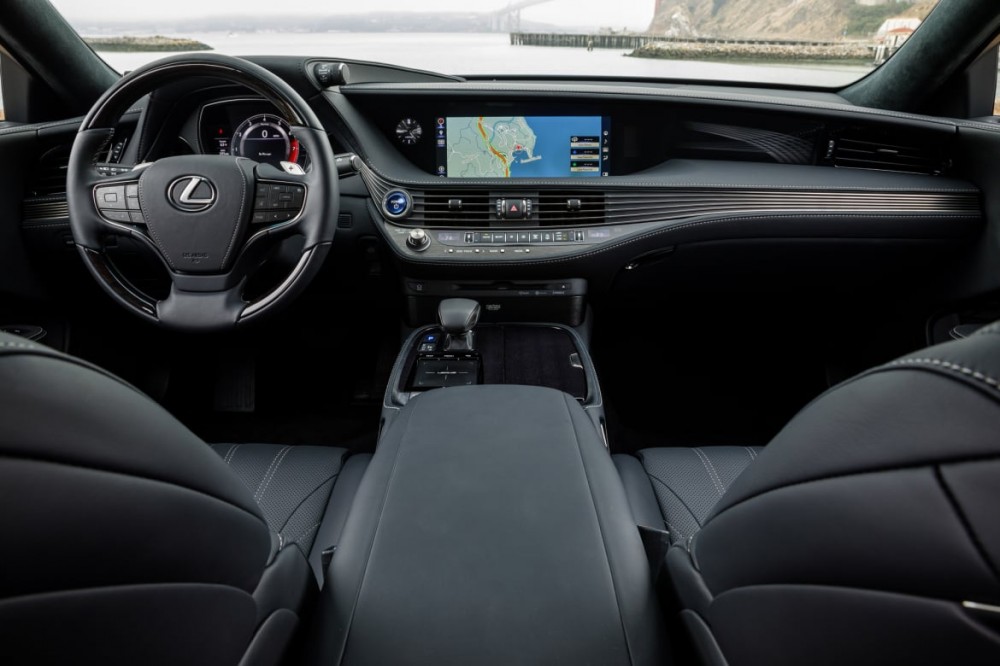
The extended-wheelbase LS is gone, but the backseat gained 2.2 inches of legroom over the LS 460. (The front seats lost 2.7 inches, but at 6 feet tall, I didn't miss it a bit.) I had plenty of room in back, too, along with an optional touchscreen in the center armrest for controlling the rear climate zones, lighting, audio and more.
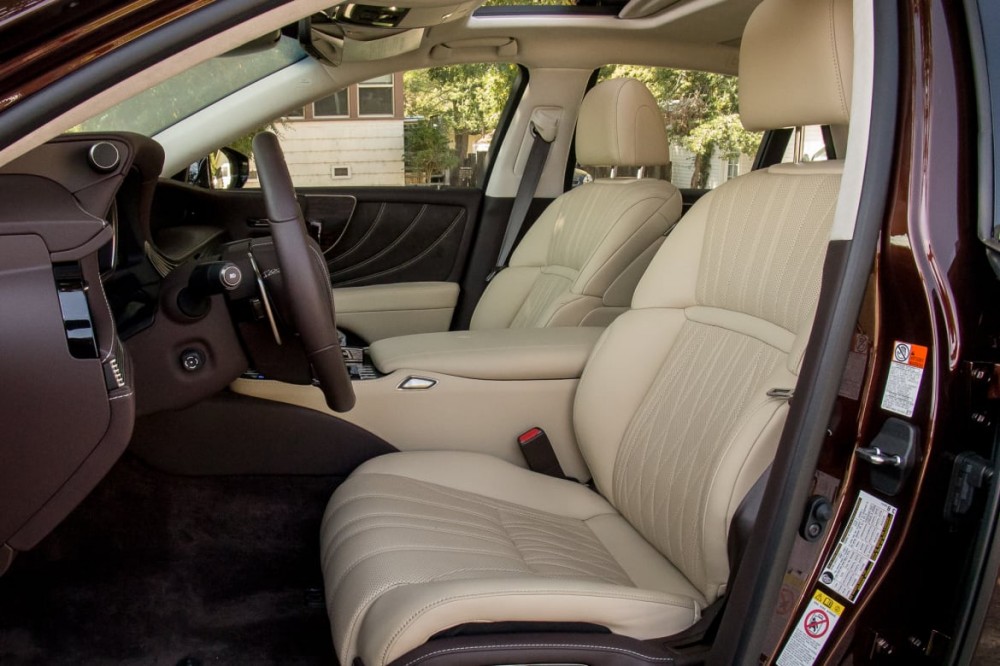
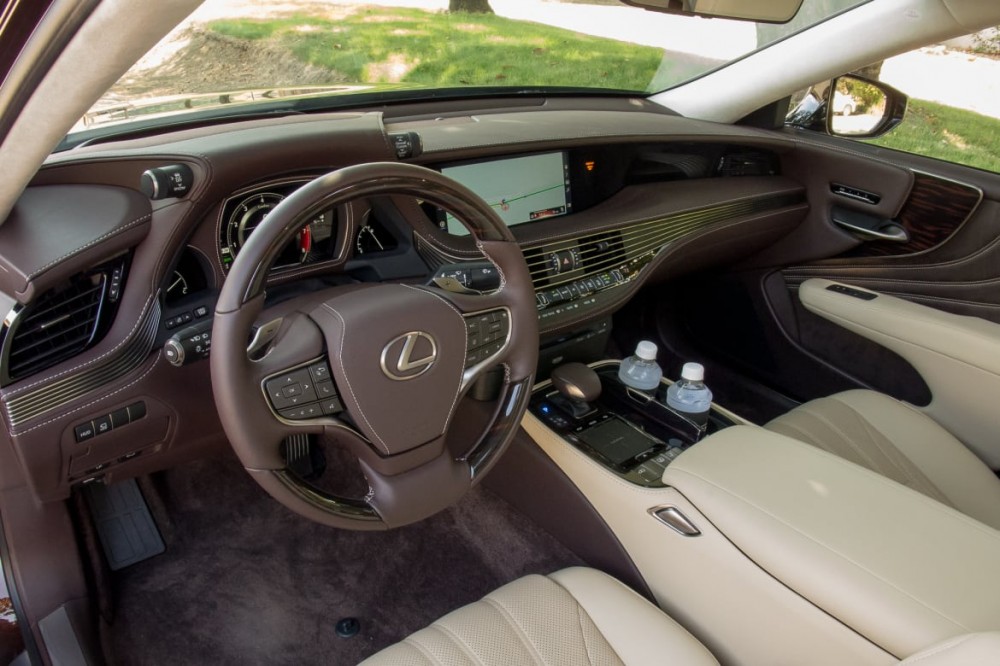
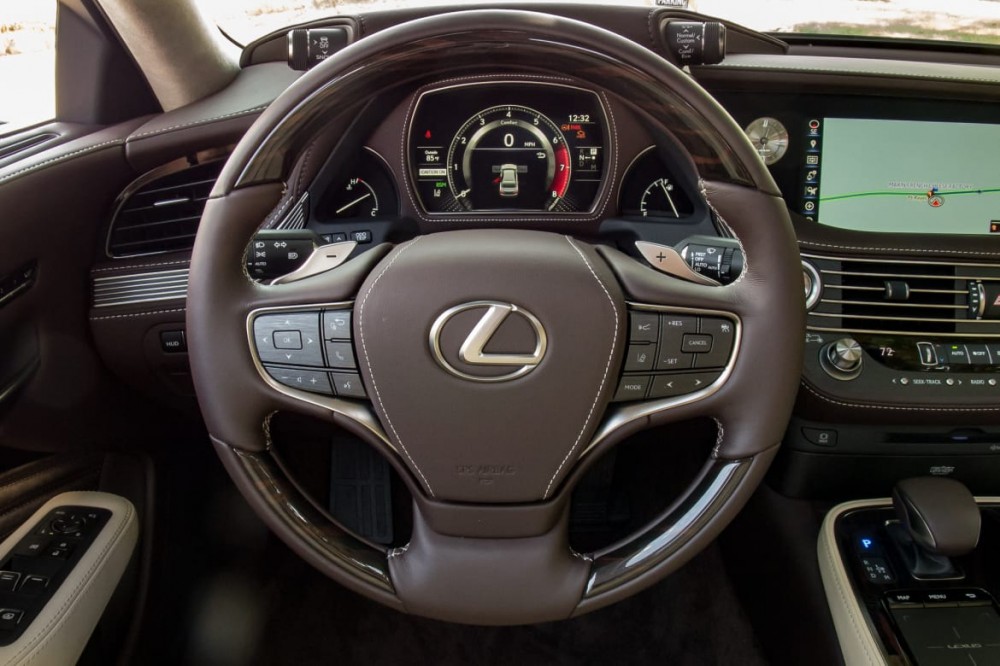
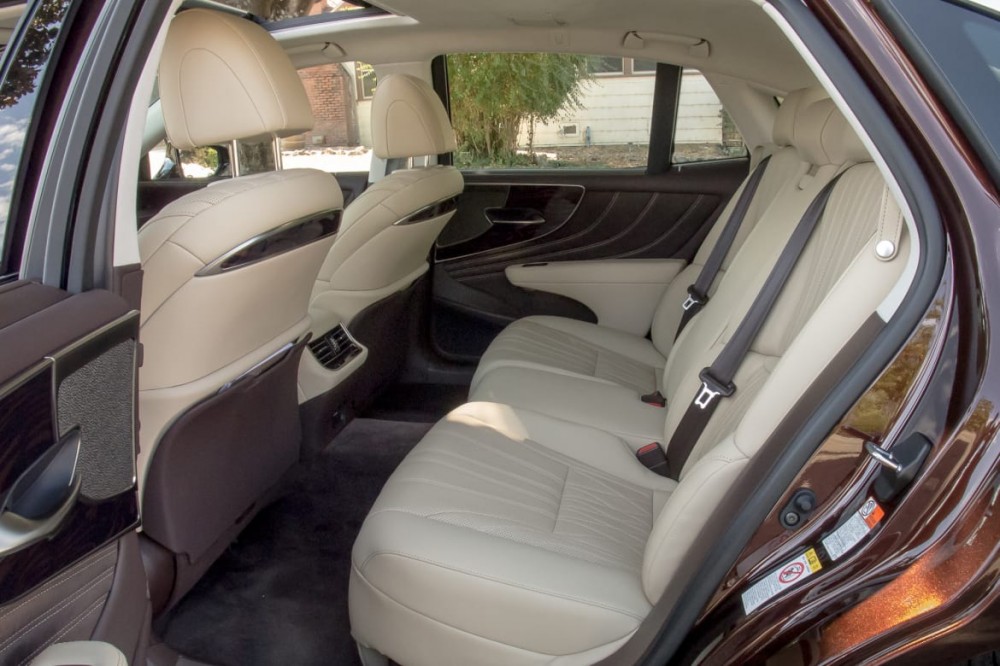
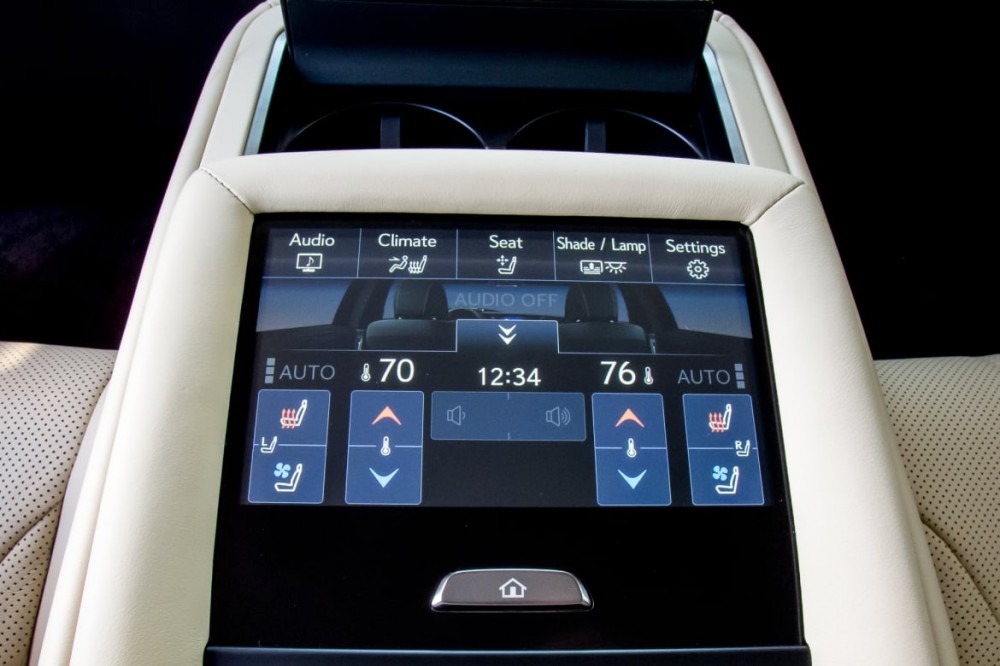
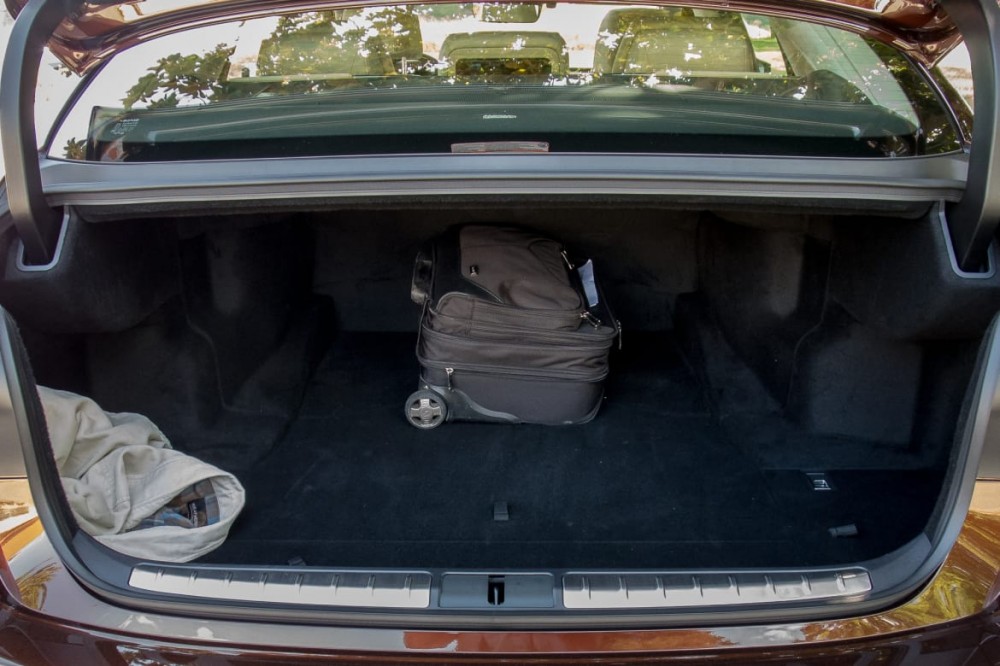
I was duly impressed with the optional Executive Power Rear Seat with Ottoman. The motorized ballet as it reclines is just as appealing as it was in the BMW 7 Series, but Lexus has done a better job of keeping the front passenger seat from obstructing the driver's view when it's scooted forward. (The BMW even issues a warning to the driver as a precaution.)
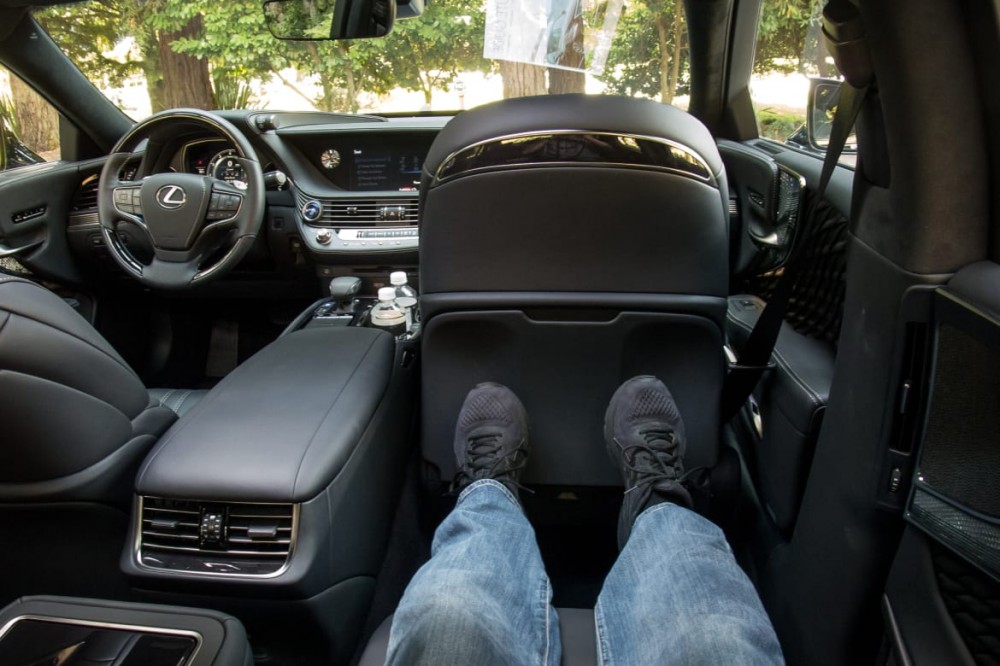
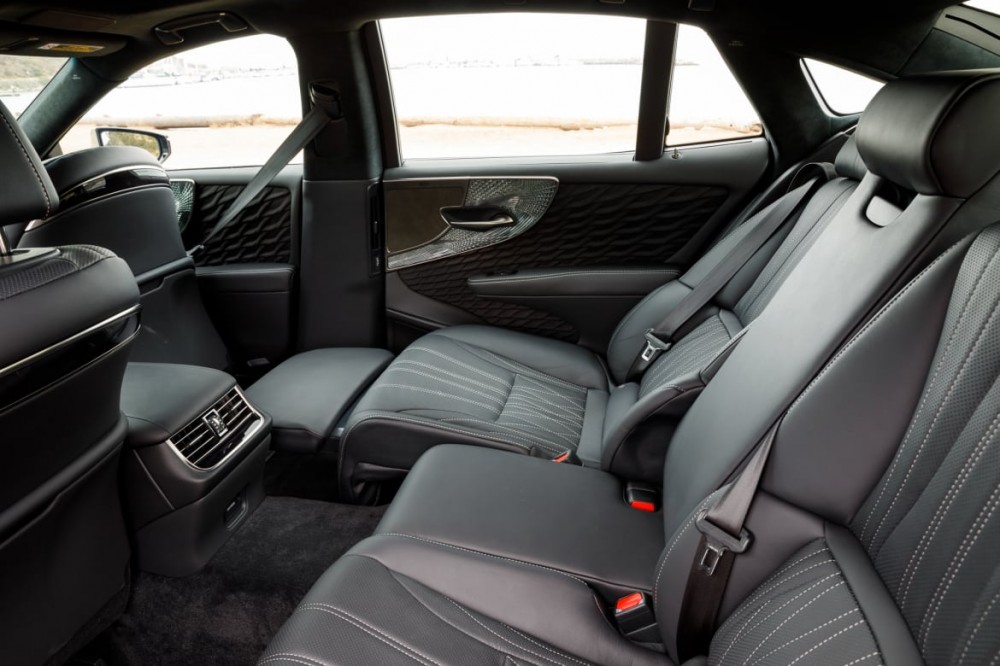
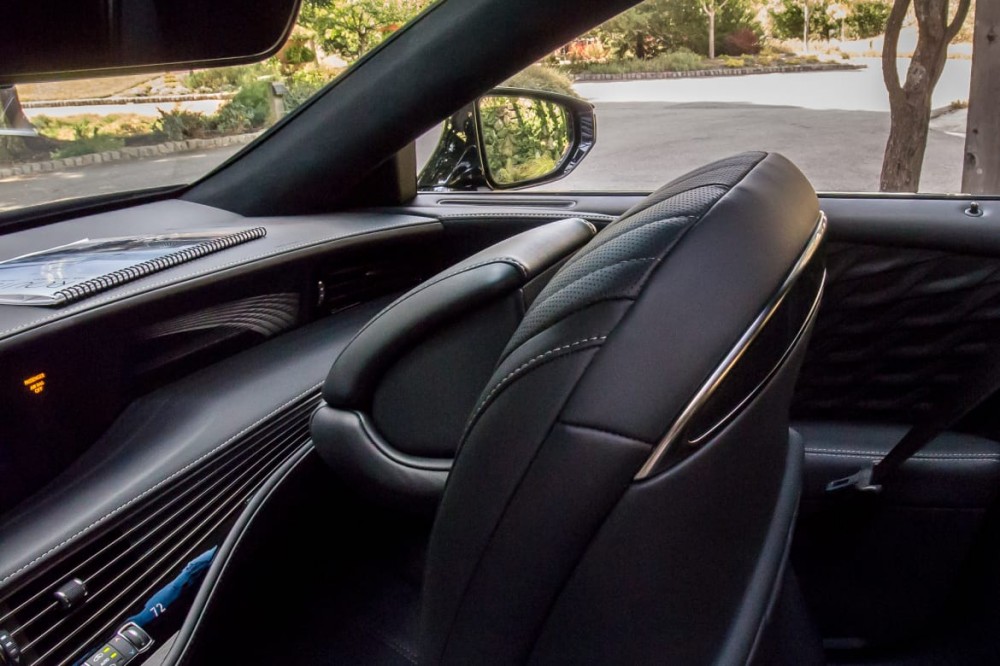
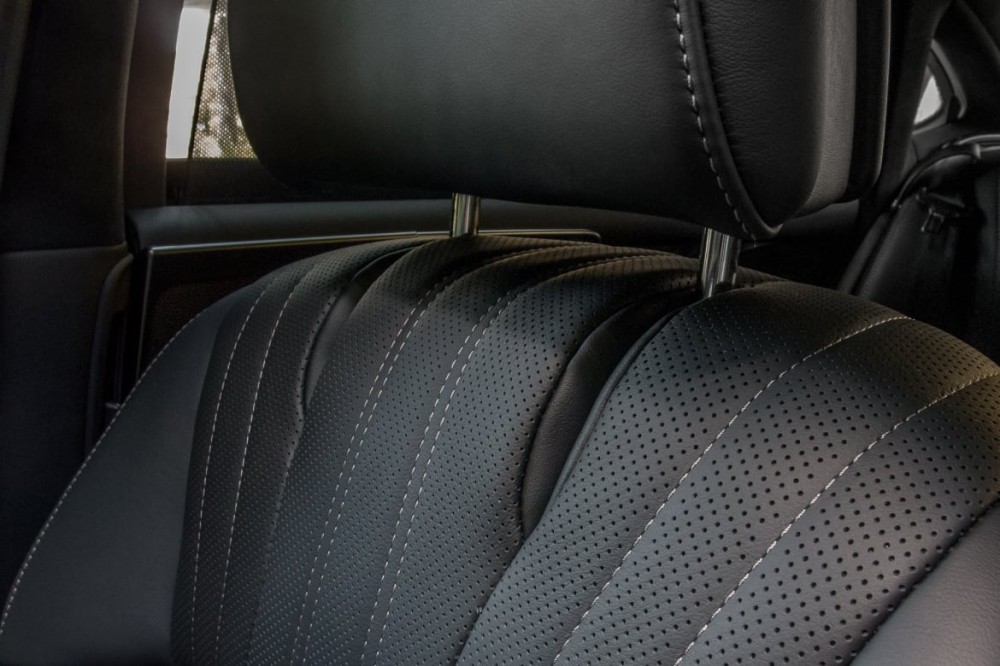
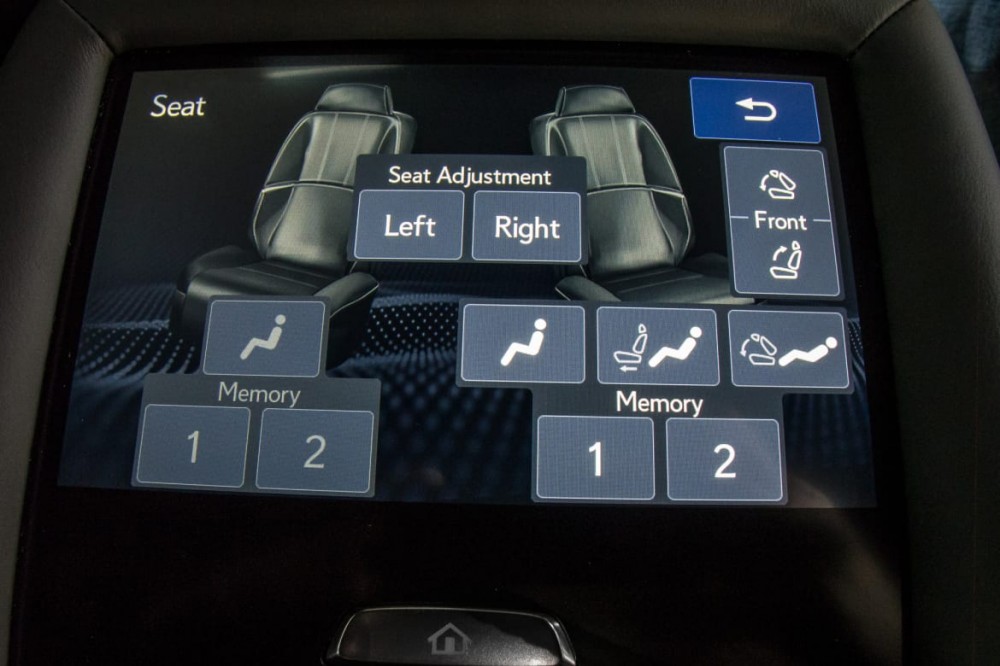
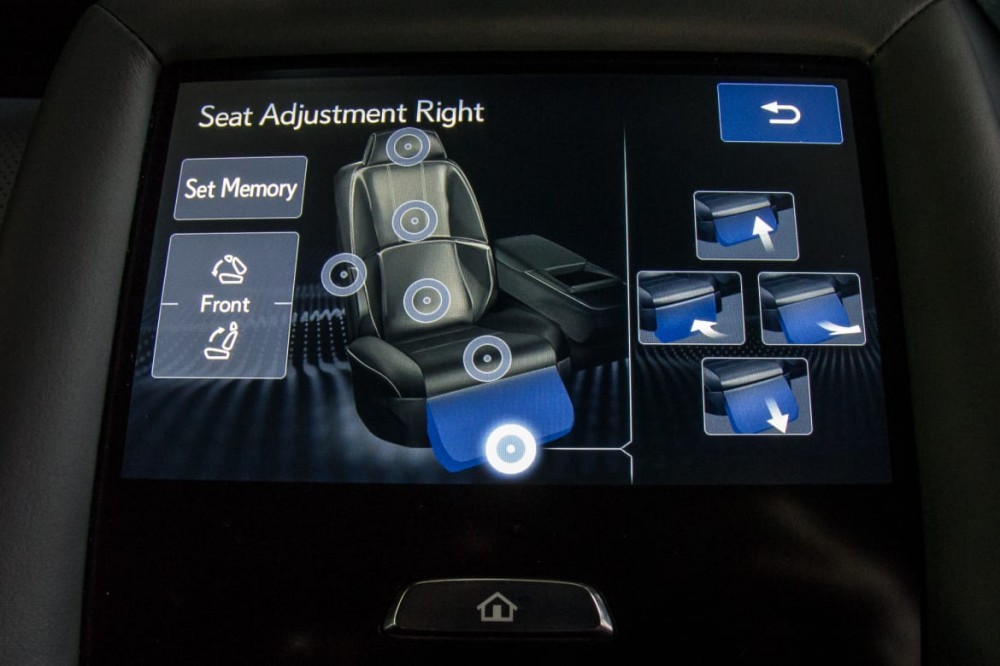
Technology by Lexus, Not Apple
Lexus has stepped up its game with safety and convenience technology. One tech omission is that the LS isn't compatible with Apple CarPlay or Android Auto. The LS includes basic connectivity via two USB ports in front, and my test vehicles had two in the backseat armrest, as well, to charge mobile devices with a healthy 2.1 amps.
More ground is broken in the safety area. In addition to rear cross-traffic alert, which is becoming common in vehicles with blind spot warning, the LS adds the less common rear auto braking and pedestrian protection. Even more exclusive, the LS offers the same for the front of the car with the optional Advanced Package. With it, when you're creeping into an intersection the LS alerts you to cars or pedestrians coming from either side.
What really sells it is the optional, giant color head-up display image, which measures 24 inches wide by 6 inches high in the driver's field of view. It flashes arrows showing which side has the threat, and the car can also brake automatically. The configurable HUD's size allows it to show a wealth of other information, as well. If you like HUDs you'll welcome this one, but its size probably won't convert any detractors.
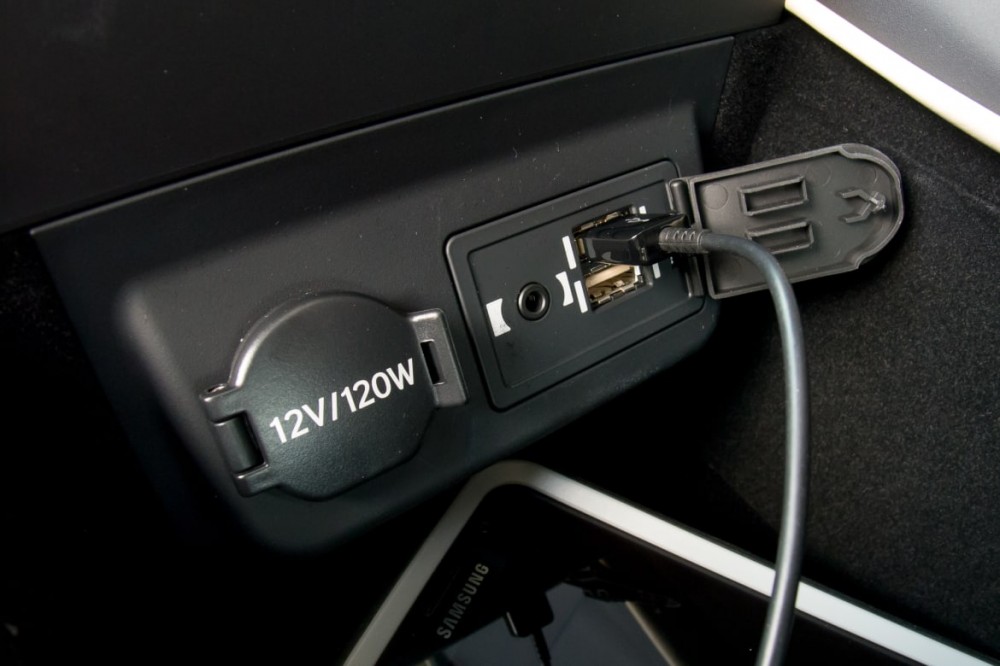
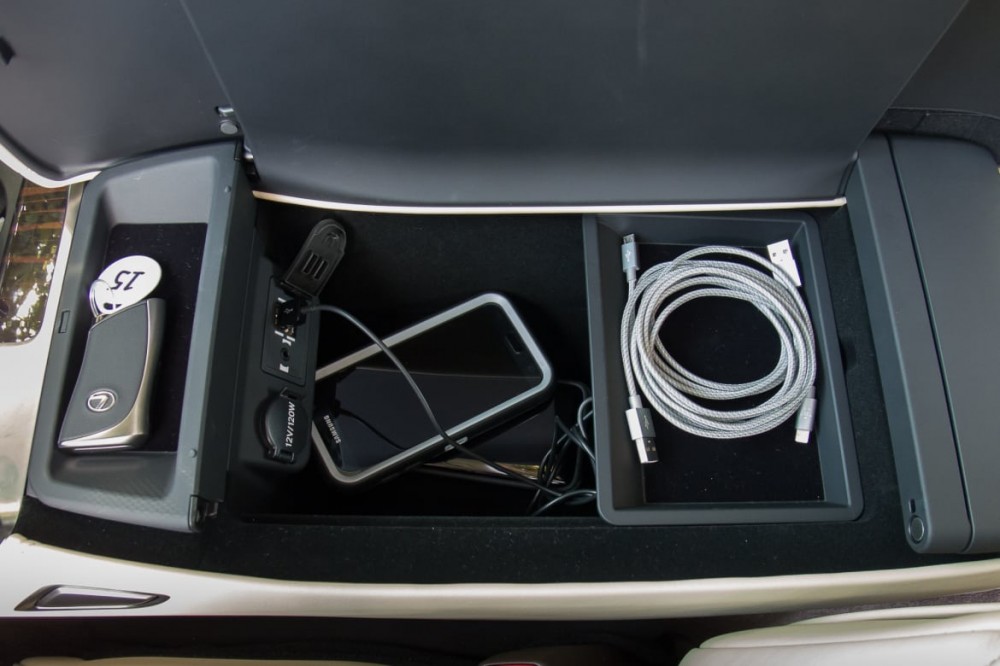
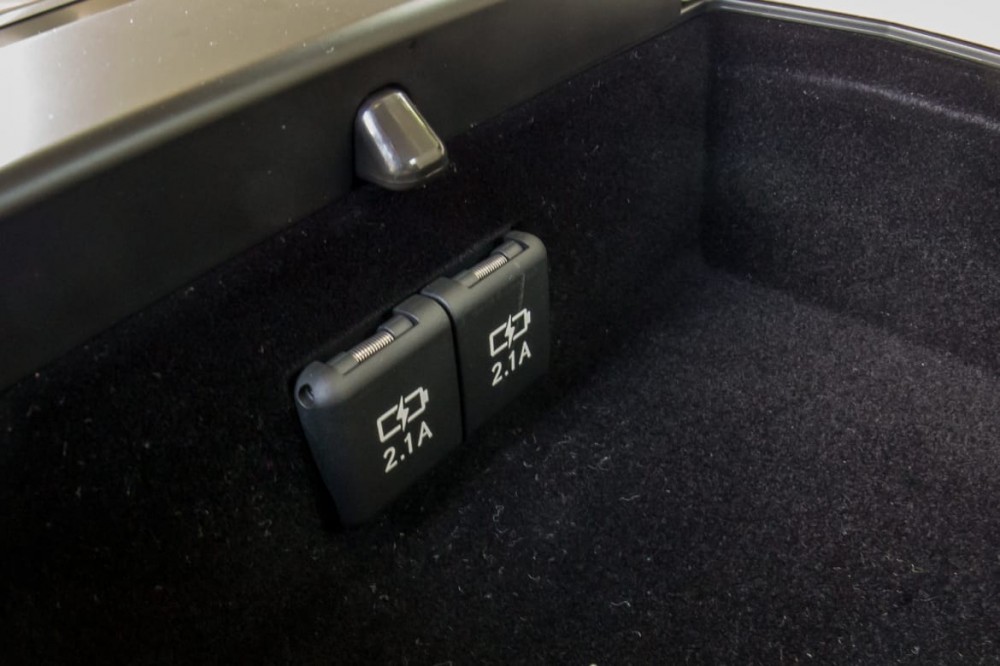
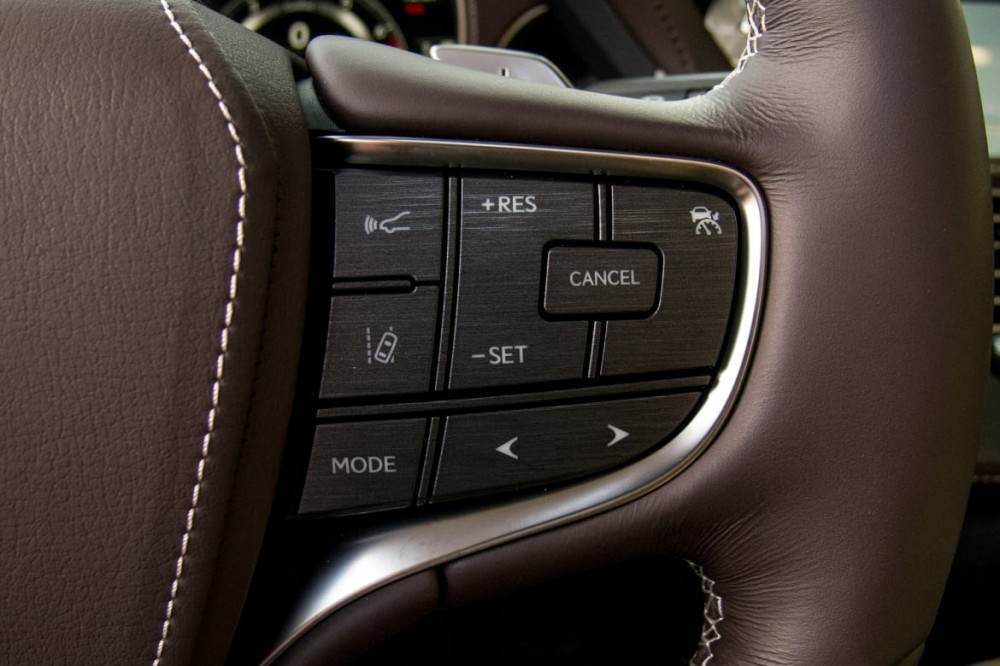
Standard Lexus Safety System Plus includes forward collision warning with pedestrian detection, all-speed adaptive cruise control, automatic high beams, and lane departure warning and prevention, the latter of which is called Lane Keep Assist. This is a corrective feature that steers you back into your lane if you stray, but if you want more precise lane-centering, you'll have to get the optional Advanced Package, which adds Lane Trace Assist. The package adds a second camera and wider radar coverage in front that allows the system to see more, including bicycles and the road itself rather than just lane markings, and to follow vehicles through curves. It even allows the car to steer automatically to avoid a pedestrian if there's room to either side.
My time with the more advanced features was brief, but the adaptive cruise control and Lane Trace Assist didn't work as well as the best such technology I've experienced. Lane-centering was so-so, and the adaptive cruise turned itself off once because there was no lead car to follow — an odd and unnecessary action that also occurred in the LC 500 I drove. Still, I think these driver aids are valuable enough to choose if you buy the car.
Value in Its Class
Precise comparisons aren't yet possible pending complete pricing information, but at "roughly $75,000," according to Lexus, the LS 500 will continue to offer a price discount of about eight to 20 grand versus German competitors — more in line with the Jaguar XJ. It brings bold styling and distinctive Lexus character inside and out, and it's more appealing that it's been in many years.








